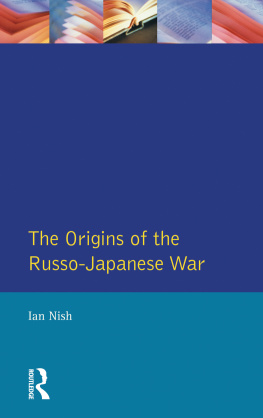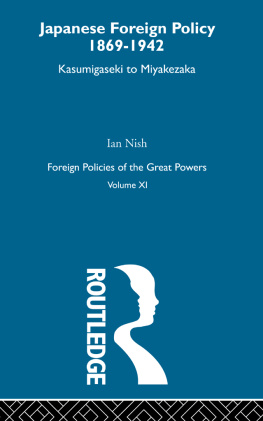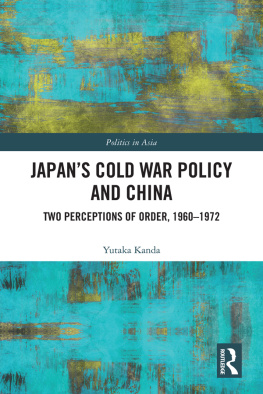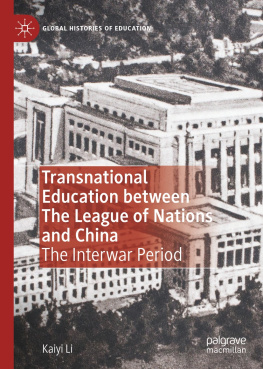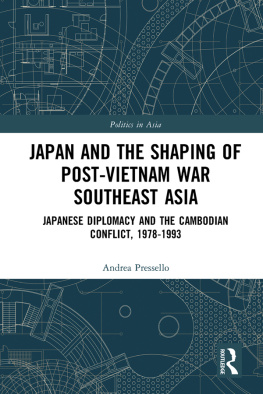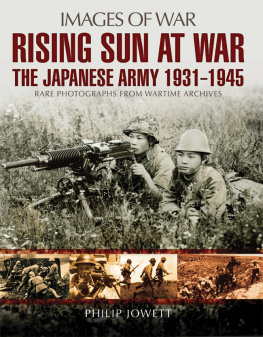First published in 1993 by
Kegan Paul International Ltd
This edition first published in 2009 by
Routledge
2 Park Square, Milton Park, Abingdon, Oxon, 0X14 4RN
Simultaneously published in the USA and Canada
by Routledge
270 Madison Avenue, New York, NY 10016
Routledge is an imprint of the Taylor & Francis Group, an informa business
Kegan Paul Internationa 2000
Transferred to Digital Printing 2009
All rights reserved. No part of this book may be reprinted or reproduced or utilised in any form or by any electronic, mechanical, or other means, now known or hereafter invented, including photocopying and recording, or in any information storage or retrieval system, without permission in writing from the publishers.
British Library Cataloguing in Publication Data
A catalogue record for this book is available from the British Library
ISBN 10: 0-7103-0437-4 (hbk)
ISBN 13: 978-0-7103-0437-7 (hbk)
Publishers Note
The publisher has gone to great lengths to ensure the quality of this reprint but points out that some imperfections in the original copies may be apparent. The publisher has made every effort to contact original copyright holders and would welcome correspondence from those they have been unable to trace.
Preface
During a recent visit to Japan, I was asked how I taught Japanese history. I explained among other things that I had for some twenty years conducted a special subject in the history syllabus on the Manchurian crisis from 1931 to 1933. Two Japanese historians expressed surprise. Surely the Manchurian incident finished in 1931? said one. Certainly, said the other, or it may have gone a little into 1932. For them the Manchurian question was resolved with the creation of Manchukuo in March 1932. It was the common historical phenomenon: the differing perception of a single event across national frontiers.
There is a tendency in Japan to focus on the Manchurian incident while we in the west think of it as the Manchurian crisis. The incident is deemed to be narrow, confined to the single region of Manchuria, and bi-lateral, involving only China and Japan. It is assumed to extend from September 1931 to the establishment of Manchukuo. The focus of Japanese scholarly interest tends to be with the act of disobedience by the army leaders, who finally got their way with the setting up of a state independent of Chinas central government. Foreign scholars, by contrast, tend to consider it as a crisis because it was broad- based, multi-national and concerned with the whole issue of Chinese nationalism. It was in their view a many-sided crisis, an individual crisis for the many nations involved but also a global crisis for collective security. The Chinese view and on this occasion the foreign view is that the nature of the Manchurian problem was changed by virtue of Chinas appeal to the League of Nations; that this converted it from being a military problem to a primarily diplomatic one; and that the international aspect of the crisis did not come to an end until the League had come to a decision in the halls and corridors of Geneva and Japan had reacted by withdrawing from it in March 1933. These Japanese and foreign differences of perception are not artificial but turn on real matters of substance.
This study deals with the Manchurian crisis as one of the major international crises of the period between World Wars I and II. What we call the Manchurian crisis is a vastly complicated issue. But it is worth trying to throw new light on one limited aspect of it because the overall crisis was an important turning-point for all countries involved in it. Its relevance for the histories of Japan and China is obvious. For Britain and the United States, it bred a new distrust of Japans long-term national objectives. It also brought home to all concerned the weaknesses of the League of Nations and the other instruments of collective security which had been devised to deal with problems of the Pacific Ocean area.
The first focus of this study is on how one of the international bodies of the time, the League of Nations, attempted to cope with the emergency that broke out in the east in September 1931. It was a regional dispute, far from the area which was regarded as the normal crisis-zone for the League. Access to an objective account of what had taken place was almost impossible, which made it a difficult matter for the committees of the League to handle. Thus deprived of the facts, the committees of the League secretariat welcomed the setting up of a commission of enquiry. The Commission, under Lord Lytton, could not have been more painstaking and sensitive in collecting information and drawing up conclusions for its final report. But this did not greatly ease the task of the League (with the collaboration of the United States) when the findings came to be mulled over in its committees at the end of 1932. By this time attitudes had hardened; and it proved impossible to find an international solution by conciliation. Since we are concerned with how the world conceived the crisis and the Shanghai crisis of the spring of 1932, the emphasis of this study is deliberately on the crowded years 1932 and 1933, rather than the more familiar story of 1931.
The second focus is on the clash of attitudes in Japanese politics. The period covered by the Manchurian crisis was the point when civilian government in Japan was seriously challenged for the first time in the twentieth century. Of course, civilian cabinets and the Foreign Ministry in particular had been overruled and flouted before, most notably in 1914, 1918 and 1928. But 1931 saw a concerted attempt on the part of the army to make its own autonomous decisions without interference and thus take political power for itself. With the changes of government in December 1931 and again in May 1932 the extent of civilian control was eroded and was not to be restored for a
This study falls into three well defined sections in terms of chronology. Chapters 1 to 6 treat briefly the outbreak of the crisis and the Chinese appeal to the League of Nations in September 1931; the Leagues failure to resolve the problem and its appointment of a Commission of Enquiry; the occupation of Chinchou city and the Shanghai incident. Chapter 7 to 10 deal in greater detail with the main test of Japans internationalism during the crisis, namely the Japanese governments treatment of the Lytton Commission. We follow Japans reaction to the Commission as it progressed through Japan, China, Manchuria; initially hopeful and optimistic that the Commissioners could be persuaded to share the Japanese view, later suspicious and uncooperative, until as the Commissions Report is known to be hostile to the state of Manchukuo, the Japanese go ahead with the recognition of that state in September. The final chapters, 11 to 14, cover the aftermath of the Lytton Report, extending from November 1932 through the Tangku truce (June 1933) to the Am declaration. The discussion focuses on the proceedings at the League in Geneva, where Japan was widely condemned for her actions but declined to make any major concessions to international opinion, finally pulling out of the League as a result of the Assemblys criticisms.
The time is ripe for a fresh account of this crisis by reason of the new materials which have become available. The appearance of the eight bulky volumes in the Nihon Gaik Bunsho series dealing with the Manchurian crisis allows scholars a new look at the civilian side of the operation.publication of Professor Asadas


